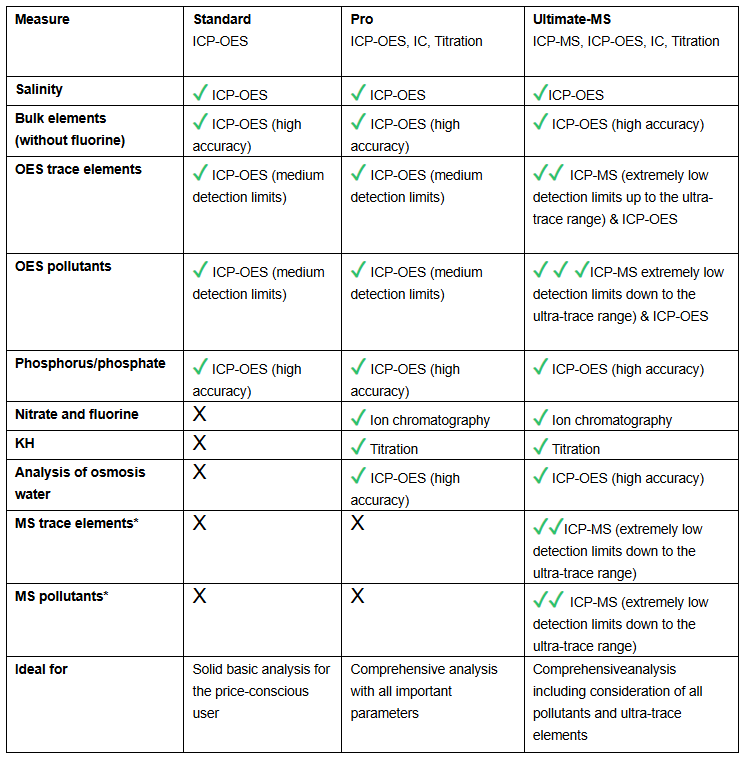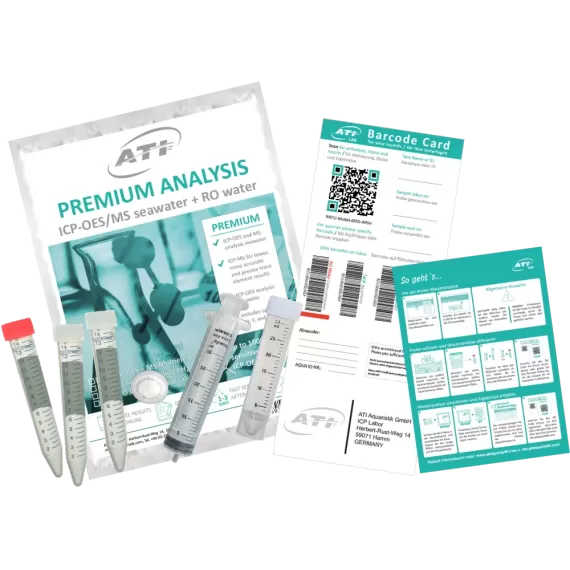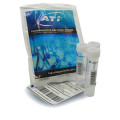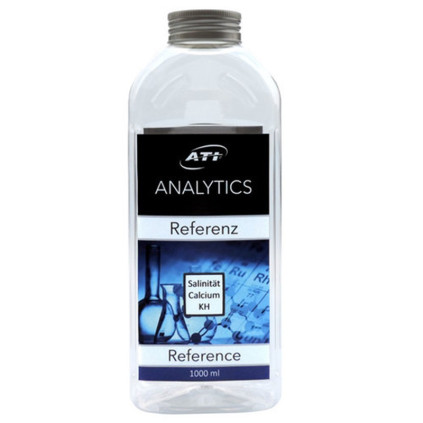The basis for every successful saltwater aquarium is correctly adjusted, near-natural water values. A different water composition is the most common cause of a variety of problems in the aquarium such as algae growth or coral death. At the same time, the correct measurement of water values is a major challenge.
The high-precision ATI laboratory analyses offer you the advantage that the main water values (e.g. calcium, magnesium, salinity, etc.) can be determined much more precisely and reliably than is possible with commercially available droplet tests. Furthermore, you will receive a comprehensive overview of a large number of other relevant elements that can only be determined with professional laboratory analysis.
For this purpose, the ATI laboratory uses a variety of highly specialized analytical instruments such as ICP-OES, ICP-MS, ion chromatographs and titrators. Depending on the element, the most appropriate measurement method is used.
The ATI laboratory, which is headed by Dr. Ben Funk, draws on many years of experience in analysis. We assure you of reliable, reproducible analysis results and are always available to answer any questions you may have about the measurement results.
Your water analysis is in the best hands with us.
At ATI, you can choose from three types of water analyses with different measurement ranges: Standard, Pro and Ultimate.
ATI ICP Laboratory Analysis Ultimate
With the ATI Laboratory Analysis Ultimate, the combination of ICP-OES and ICP-MS gives you the highest possible accuracy in all areas and our most comprehensive analysis. The ATI Laboratory Analysis Ultimate offers numerous advantages:
-
Higher accuracy and significantly lower detection limits up to the ultra-trace range due to ICP-MS (e.g. manganese, selenium, vanadium, arsenic, etc.) – element-specific detection up to 0.001 μg/l possible (cf. detection limit ICP-OES 0.5 – 3.5 μg/l depending on the element).
-
Earlier detection of contaminants: Enables faster reactions to prevent problems
-
Doubly validated results: Many values are measured using both ICP-OES and ICP-MS and checked for plausibility. This makes it possible to rule out measurement errors even more reliably.
-
Extended element portfolio (so-called MS trace elements* and MS pollutants*): rubidium, neodymium, zirconium, and many more
-
The most suitable measurement method is used for each water value - e.g. bulk elements with ICP-OES, trace and ultra-trace elements with ICP-MS
With precise measurement from bulk element to ultra-trace element, the ATI Laboratory Analysis Ultimate achieves unprecedented accuracy.

The measures from the table include the following:
-
Salinity (salinity in PSU)
-
KH (=carbonate hardness / alkalinity)
-
Nutrients: Nitrogen / Nitrate , Phosphorus / Phosphate
-
Bulk elements: sodium, calcium, chloride, magnesium, sulfur, potassium, bromine, strontium, boron, fluorine
-
OES trace elements: barium, beryllium, iron, iodine, lithium, molybdenum, silver, silicon
-
OES pollutants: aluminum, antimony, bismuth, cadmium, lanthanum, thallium, titanium, tungsten
-
MS trace elements*: arsenic, chromium, cobalt, copper, manganese, nickel, rubidium, selenium, vanadium, zinc, tin
-
MS pollutants*: lead, neodymium, niobium, zirconium, indium, germanium, gallium, mercury, tellurium
*MS Trace Elements/Pollutants – elements that can only be measured in the physiologically active range with ICP-MS
This is how ATI laboratory analyses work:
-
Register on lab.atiaquaristik.com, create an aquarium profile and scan the QR code to activate the analysis.
-
Fill your aquarium water into the sample tubes that come with the analysis set.
-
Stick the barcodes on the dry tubes and send them to the address on the enclosed card.
-
We will confirm receipt of your sample by email
-
As soon as we have analyzed your sample, you will receive another email with a link to the measurement results and detailed recommendations for action.








Legg igjen en anmeldelse